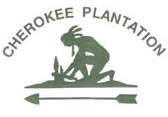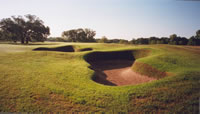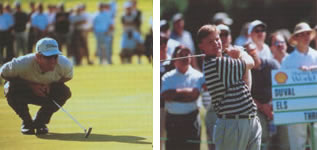Cherokee Plantation - South Carolina
Back to Case Studies Page
- 1st Donald Steel Course completed in the USA.
- It was designed and is maintained along traditional lines, with firm and fast fairways and greens.
- Choice of warm season grasses has been an exciting challenge to ensure that the course achieves the traditional character.
- The huge Live Oaks are a dominant feature of the course. Some are at least 400 years old.
- Hosted Shell Wonderful World of Golf Match in 2000 between David Duval and Ernie Els.

Donald Steel completed his first course in the USA in the summer of 1999 at Cherokee Plantation in South Carolina. The mastermind for the project is Peter de Savary, founder of the Carnegie Club, whose vision was to create an exclusive private hideaway for a few wealthy individuals who can enjoy the Olmsted designed plantation, its 400 acres of renowned shooting and golf.
The plantation is set in the heart of the Lowcountry of South Carolina and the golf course site is surrounded by swamp on three sides. That said, however, the land for the course is stunning with gentle undulations, uncommon in this part of the world, and Live Oak trees that are truly magnificent. The aim with the design was to create a course which was in sympathy with the glorious surroundings and which offers a golfing experience quite unlike that offered by the hundreds of other courses in the Hilton Head and Charlston area.

The 1st hole
The course was designed to make best use of the trees and undulations of the land. Original pasture grasses that are native to the area have been used in the rough so that the appearance of the plantation remains largely unaltered and as Olmsted intended. It is not long by modern golfing standards and the course has been laid out to present a stern test of the short game, which in turn places a premium on placement from the tee. With the top professionals hitting the ball 340 yards from the tee now, the green design is the only form of defence.
The bunkers are another distinctive feature of the course. They have revetted (sod-wall) faces that dominate the character of many of the holes, despite there being less than 40 on the course. Compare that to a newly opened course on Hilton Head where there are 26 bunkers on one par three that also has a lake from tee to green along the left of the hole.
Grasses for the playing areas have been carefully selected to promote a fast running game with tightly mown approaches and green surrounds. 419 bermuda grass has been selected for tees and fairways, whilst Tifdwarf was used on the approaches and green surrounds. On the green surfaces one of the new "ultra-dwarf" Bermudas, Tiffeagle, was used. These grasses, along with an austere maintenance policy that involves less fertiliser and water being applied, and the native grasses in the rough result in maintenance costs being drastically reduced; more than halved in fact. In a part of the world where maintenance budgets are routinely $1,000,000 per year and where courses are set up like dart boards the course is raising a few eyebrows.

The sod wall bunkers
In April 2000, a Shell Wonderful World of Golf Match was played on the course, the participants being David Duval and Ernie Els. It was held on the day after the Masters when Els finished second and Duval tied for third and both players struggled to find form, with Duval eventually edging out Els with a 73, 2 over par.

Duval and Els
The construction work was project managed by Brian Pierson who has been responsible for the coordination of all of the Peter de Savary golf projects. A British-based New Zealander, Peter Ferguson, was the site foreman who worked closely with two British shapers who had worked with Steel in the past. Between them, they shaped the greens and bunkers. A Florida based golf course constructor, Reed H. Berlinsky, constructed the remaining elements of the course.
This work involved the excavation of large volumes of sand from two lakes to cover the heavy clay on the fairways, ensuring good drainage and all of the irrigation and cultivation work. Technical consultancy was provided by Mike Beebe and Associates on grasses and soils and from Thomas and Hutton Engineering Company who designed the storm drainage system.